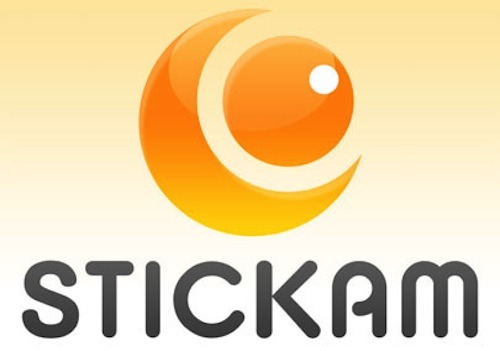Stickam was a live video streaming website that allowed users to broadcast video streams live and interact with viewers through chat. It was popular in the mid-2000s but eventually shut down in 2013. It was known for its real-time interaction features and was used for a variety of purposes, from personal broadcasts to professional live shows. If you’re asking about it, you might be interested in how live video streaming has evolved since then.

On Stickam, a “Stickam video” referred to any video content that was broadcasted or uploaded to the platform. This could include:
- Live Streams: Real-time broadcasts where users streamed live video content to their audience.
- Recorded Broadcasts: Users could also save and share recordings of their live broadcasts or uploaded video clips for others to watch later.
- Profile Videos: Videos posted on a user’s profile page, which could be either live streams or pre-recorded content.
These videos were often interactive, with chat and other social features integrated, allowing viewers to engage directly with the content and the broadcaster.
Who laid the foundation of Stickam Video?
Stickam was founded by three entrepreneurs: Mike Bebel, Darren Waggoner, and Daniel S. Smith. They launched the platform in 2006, aiming to create a social video experience.
Features made available by Stickam
Stickam offered several features that made it stand out in its time:
- Live Video Streaming: Users could broadcast live video to their audience in real time.
- Chat Integration: Viewers could interact with broadcasters through a chat interface, allowing for real-time communication and engagement.
- Multiple Streamers: It allowed multiple users to stream simultaneously, which was a unique feature for its time.
- Profile Customization: Users could create and customize their profiles, adding personal information, photos, and links.
- Emoticons and Stickers: The chat feature included emoticons and stickers for more expressive communication.
- Audience Interaction: Broadcasters could manage their audience, including moderating chat and setting up interactive features.
- Social Features: It had social networking elements, such as friends lists and notifications for when friends were online or broadcasting.
These features contributed to its popularity as a social video platform during its heyday.
Was Stickam free?
Stickam was primarily a free service, allowing users to stream live video and interact with others without any cost. However, it also offered a paid VIP program that provided enhanced features and benefits for a subscription fee.
Additional Features offered by Stickam on a VIP Program
The VIP program on Stickam included several additional benefits for premium users, such as:
- Ad-Free Experience: VIP members enjoyed an ad-free browsing and streaming experience.
- Enhanced Streaming Quality: Higher video and audio quality for live streams.
- Priority Support: Faster response times and support for technical issues.
- Customization Options: More tools for personalizing their streaming channels.
- Increased Bandwidth: Higher limits on bandwidth for streaming, which could improve performance.
- Exclusive Features: Access to special features and functionalities not available to free users.
These perks aimed to provide a better user experience and additional functionality for those who paid for the VIP membership.
Did any celebrities use Stickam to gain popularity?
Yes, Stickam was a platform where several individuals gained popularity and transitioned to larger fame. Some notable figures who were active on Stickam include:
- Tila Tequila: A reality TV star and singer, Tila Tequila used Stickam to interact with fans and build her online presence before her mainstream success.
- Shane Dawson: A well-known YouTuber and content creator, Shane Dawson used Stickam early in his career to connect with his audience and build his brand.
- Alex Gaskarth: Lead vocalist of the band All Time Low, Alex Gaskarth engaged with fans on Stickam, helping to grow his band’s following.
These individuals leveraged Stickam’s live streaming and interactive features to engage with their audience and build their personal brands, which helped them gain further recognition and success in their respective fields.
Was there Bestality or any other harmful content found on Stickam?
Stickam had community guidelines that prohibited explicit and harmful content, including bestiality. However, like many platforms, it faced challenges in enforcing these guidelines consistently. Instances of inappropriate content sometimes slipped through, leading to legal and ethical concerns. Such content was against Stickam’s policies, and the platform aimed to address and remove it when reported or detected.

Measures taken by Stickam to prevent Harmful Content
To control bestiality and other harmful content, Stickam implemented several measures:
- Community Guidelines: Stickam had a set of rules and guidelines that prohibited explicit, illegal, and harmful content, including bestiality. Users were expected to adhere to these guidelines.
- Moderation Team: The platform employed moderators to monitor live streams and user reports. Moderators were responsible for identifying and removing content that violated Stickam’s policies.
- User Reporting: Stickam provided tools for users to report inappropriate or harmful content. This allowed the community to help in identifying and flagging problematic material.
- Automated Systems: Although not as advanced as modern systems, Stickam used automated tools to help detect and filter explicit content. These tools were designed to flag and review potentially inappropriate material.
- Account Suspension and Bans: Users found violating guidelines could face account suspension or bans. This was a deterrent aimed at preventing repeat offenses and maintaining a safer environment.
Despite these measures, enforcing content moderation on a platform with live streaming capabilities posed significant challenges, and some harmful content occasionally slipped through.
Why was Stickam discontinued?
Stickam was discontinued in 2013 due to several factors:
- Increased Competition: By the early 2010s, the market for live streaming and video sharing had become highly competitive, with platforms like YouTube, Facebook, and Twitch offering advanced features and larger user bases.
- Financial Challenges: Stickam faced financial difficulties and struggled to keep up with the investment required to maintain and innovate its platform amidst growing competition.
- Changing User Preferences: As social media and video sharing technologies evolved, user preferences shifted toward platforms that offered more integrated features, better user experience, and higher-quality streaming.
These factors combined to make it difficult for Stickam to sustain its operations and relevance in a rapidly evolving digital landscape.




